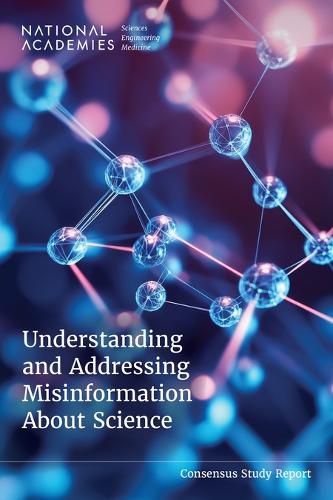Readings Newsletter
Become a Readings Member to make your shopping experience even easier.
Sign in or sign up for free!
You’re not far away from qualifying for FREE standard shipping within Australia
You’ve qualified for FREE standard shipping within Australia
The cart is loading…






Our current information ecosystem makes it easier for misinformation about science to spread and harder for people to figure out what is scientifically accurate. Proactive solutions are needed to address misinformation about science, an issue of public concern given its potential to cause harm at individual, community, and societal levels. Improving access to high-quality scientific information can fill information voids that exist for topics of interest to people, reducing the likelihood of exposure to and uptake of misinformation about science. Misinformation is commonly perceived as a matter of bad actors maliciously misleading the public, but misinformation about science arises both intentionally and inadvertently and from a wide range of sources.
Understanding and Addressing Misinformation About Science characterizes the nature, scope, and impacts of this phenomenon, and provides guidance on interventions, policies, and future research. This report is a comprehensive assessment of the available evidence and reflects a systems view of the problem given the broader historical and contemporary contexts that shape the lived experiences of people and their relationships to information. The report aims to illuminate the impacts of misinformation about science and potential solutions across a diversity of individual peoples, communities, and societies.
Table of Contents
Front Matter Summary 1 Introduction 2 Defining Misinformation About Science 3 Misinformation About Science: Understanding the Current Context 4 Sources of Misinformation About Science 5 Spread of Misinformation About Science 6 Impacts of Misinformation About Science 7 Intervening to Address Misinformation About Science 8 The Study of Misinformation About Science 9 Conclusions, Recommendations, and Research Agenda References Appendix A: Public Meeting Agendas Appendix B: Committee and Staff Biographies
$9.00 standard shipping within Australia
FREE standard shipping within Australia for orders over $100.00
Express & International shipping calculated at checkout
Stock availability can be subject to change without notice. We recommend calling the shop or contacting our online team to check availability of low stock items. Please see our Shopping Online page for more details.
Our current information ecosystem makes it easier for misinformation about science to spread and harder for people to figure out what is scientifically accurate. Proactive solutions are needed to address misinformation about science, an issue of public concern given its potential to cause harm at individual, community, and societal levels. Improving access to high-quality scientific information can fill information voids that exist for topics of interest to people, reducing the likelihood of exposure to and uptake of misinformation about science. Misinformation is commonly perceived as a matter of bad actors maliciously misleading the public, but misinformation about science arises both intentionally and inadvertently and from a wide range of sources.
Understanding and Addressing Misinformation About Science characterizes the nature, scope, and impacts of this phenomenon, and provides guidance on interventions, policies, and future research. This report is a comprehensive assessment of the available evidence and reflects a systems view of the problem given the broader historical and contemporary contexts that shape the lived experiences of people and their relationships to information. The report aims to illuminate the impacts of misinformation about science and potential solutions across a diversity of individual peoples, communities, and societies.
Table of Contents
Front Matter Summary 1 Introduction 2 Defining Misinformation About Science 3 Misinformation About Science: Understanding the Current Context 4 Sources of Misinformation About Science 5 Spread of Misinformation About Science 6 Impacts of Misinformation About Science 7 Intervening to Address Misinformation About Science 8 The Study of Misinformation About Science 9 Conclusions, Recommendations, and Research Agenda References Appendix A: Public Meeting Agendas Appendix B: Committee and Staff Biographies